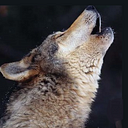Well, how about that. I used good judgment when I decided not to debate animal behavior with you! I'll stipulate that you know more than I do.
I am, however, skeptical when it comes to extrapolating human nature from animal behavior. I am also skeptical of attributing human thoughts, emotions, and motivation to observed behaviors in animals. Nevertheless, I have noted and will give serious consideration to your authoritative descriptions.
One thing that makes sense to me is that animals that live among humans adapt their behavior to that environment. Dogs, cats, and horses provide examples of that sort of adaptation.
I have observed both dogs and cats who are attracted by the odor of marijuana smoke. I have heard stories of birds being drunk from eating fermented berries. Intoxication may not be as foreign as you suggest to wild or domestic animals.
I am personally acquainted with animals performing rescues. I had a white German Shepherd who saved my daughter's life on two occasions.
Coincidentally, this headline happened to appear on my home page this morning when I opened my browser:
While I defer to your superior knowledge of animal behavior, my having a Bachelor of Arts in psychology qualifies me to speak with some authority about human behavior.
I stand by my assertion that women do not have superior wisdom whose application is thwarted by men committing violent acts against them. That assertion itself has not been challenged during this conversation.
I also continue to assert that humans would be lion and tiger food if they relied on their ability to prevail in hand-to-claw combat.
"Personally, I believe it was the shift from matrilocal to patrilocal focus that led to males seeking dominance..."
I am familiar with that theory. A couple of years ago, I was involved in an extensive Medium conversation around that idea. I am also familiar with a few alternative theories. I draw no firm conclusion as to what the truth is. There are more questions than answers.
As the practice of agriculture rose, so did the population numbers of the communities that practiced it. When a population is small enough that each member is personally acquainted with every other member (about 150 members, or fewer), it can operate with less formal social structures. A population with numbers like the United States' 300 million requires formal leadership with designated offices and more formal social roles.
Organizing a small population in which each member is personally acquainted with every other member is drastically different than organizing a massive population. The practice of agriculture led to population growth, which led to the inevitable emergence of formal offices and social roles.
